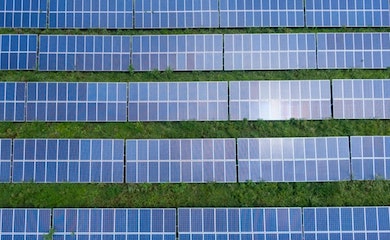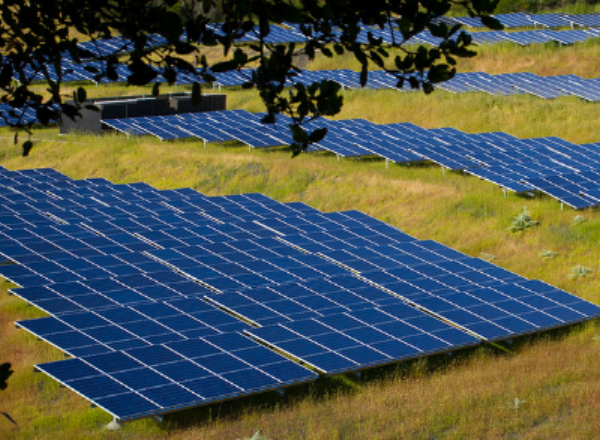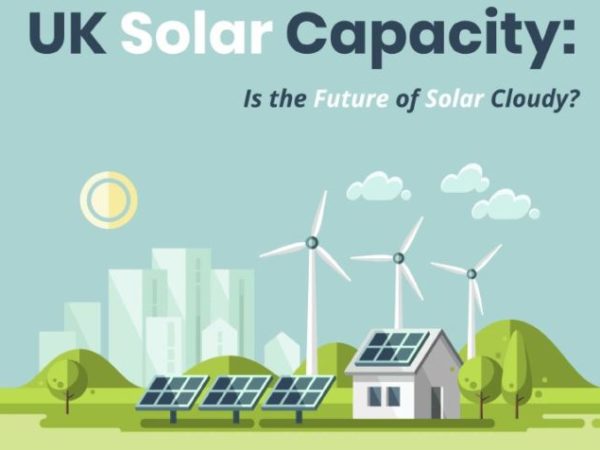The equatorial region, with its abundant sunshine, holds immense potential for solar energy solutions. This area is home to large coastal nations like Indonesia – the fourth most populous country globally [1]. As Indonesia undergoes rapid development, there remains an urgent need to decarbonise the energy sector [2]. However, challenges emerge due to the country’s dense population and diverse topography, leaving little room for ground-mounted solar panels. The solution to this energy conundrum may lie in the expanses of the ocean between Indonesia’s 17,000 islands [1].
Floatovoltaics
The scarcity of available land, especially in countries with high population density, poses a significant challenge for ground-mounted solar panels. In areas where land is in constant competition for agricultural and tourism, among others, the acquisition costs increase dramatically, impacting the economic viability of solar projects [3].
Floating photovoltaics (FPV), or floatovoltaics, have emerged as a game-changer, offering a solution to the challenges faced by traditional solar projects. The technology basically consists of solar panels positioned on floating platforms [3]. The panels benefit from their close proximity to water that aids in cooling the solar cells, ensuring efficient operation even in hot weather conditions. FPV provides the option to deploy solar panels on man-made reservoirs, hydroelectric dams, small lakes, wastewater storage ponds, and offshore marine environments. The concept originated in Japan with the installation of the first pilot FPV system in 2007 and gained momentum with the construction of the first commercial FPV in California in 2008 [4].
Figure 1: Siau Island, Indonesia, overlooking the Pacific Ocean [5]
Indonesia & Floating Solar
Indonesia is undergoing rapid development, marked by increased living standards and population growth. Projections suggest a 30-fold surge in electricity demand, reaching 9,000 Terawatt-hours annually by 2050 [6]. The Equatorial region’s specific climatic conditions, featuring relative calmness in some areas, make offshore floating solar panels an attractive option. Studies indicate that the extensive Indonesian archipelago holds significant potential for deploying offshore floating solar arrays [7].
Interestingly, the Equatorial region, including Indonesia, Malaysia, Singapore, and Papua New Guinea, experiences minimal impact from tropical storms [8]. This implies a relative safety from annual storms and the potential to generate up to one million Terawatt-hours annually. This substantial capacity is five times more energy than needed for a fully decarbonised global economy supporting 10 billion people [6].
Despite Indonesia’s dense population and limited available land, recent GIS surveys show that the country has 232 thousand square kilometres (km2) of unused land, excluding protected areas. However, a substantial portion of this land may conflict with environmental values, posing a challenge. The solution lies in Indonesia’s vast maritime expanse, covering 6.4 million km2, which is 200 times larger than necessary for meeting the nation’s entire future energy needs through offshore floating solar panels [7]. Harnessing solar energy over the seas presents a practical opportunity to reshape Indonesia’s energy landscape sustainably.
President Joko Widodo recently inaugurated a 192 MWp floating solar power plant on West Java’s Cirata reservoir, a collaboration between PLN Nusantara Power and the UAE’s Masdar. Costing 1.7 trillion rupiah ($108.70 million), this project, the world’s third largest, and Southeast Asia’s largest floating solar facility, could expand to 1,000 MWp, covering just 4% of the reservoir. Aligned with Indonesia’s renewable energy goals, President Widodo envisions further collaboration with the UAE to achieve a 500 MWp capacity. This initiative contributes to Indonesia’s commitment to reaching 23% renewable energy by 2025, despite challenges like the COVID-19 pandemic [9].
Environmental Challenges and Considerations
Deploying solar panels in marine environments brings forth a set of environmental challenges. The oceans are unbounded, tidal, saline, and highly ecologically diverse, experiencing stronger winds, waves, and currents. While FPVs offer advantages such as reduced land-use conflicts and potential water evaporation mitigation, concerns linger about their impact on marine life and ecosystems [10].
FPVs, by design, do not occupy habitable and productive areas, providing flexibility for deployment in degraded environments. Pilot studies have shown some promising results, indicating that FPVs can reduce water evaporation, significant advantages for freshwater environments. However, the impacts on marine life, including changes in dissolved oxygen levels and light penetration, require further research [11].
Sustainability Amidst Natural Disasters and Environmental Impact
Indonesia, prone to natural disasters like tsunamis, earthquakes, and volcanic eruptions, must carefully consider the resilience of solar PV infrastructure in aquatic environments. The challenge of rust, instability, and high maintenance in a marine setting necessitates robust engineering solutions [12]. Concerns regarding soiling by birds and interference with marine life, including sea birds, sea turtles, and marine invertebrates (to name a few), must be addressed to ensure the longevity and effectiveness of floating solar panels.
The country’s reliance on fishing communities and sea-transport links adds another layer of complexity. Balancing the need for sustainable energy production with the preservation of vital industries is crucial for the success of floating solar projects [1].
Global Trends and Indonesia’s Role in Floating Solar
Looking at global trends, countries like China, Indonesia, and India are poised to lead the generation of floating solar power by 2031. Projections suggest that China’s FPV capacity will reach an estimated 13,783 megawatts over the next decade. The market value of floating solar panels worldwide reached approximately 35.6 million U.S. dollars in 2022, signalling the beginnings of a prosperous industry [13].
Despite being in its infancy, the offshore floating solar industry holds tremendous promise. It is not without challenges, including salt corrosion, marine fouling, and the need for careful environmental considerations. Shallow seas emerge as preferred locations for anchoring the panels to the seabed, emphasising the importance of minimising damage to the marine environment and fisheries. As global warming alters wind and wave patterns, offshore floating panels are positioned to play a substantial role in the energy mix of equatorial nations.
Conclusion
As Indonesia moves towards a sustainable and decarbonised future, the potential of floating solar panels near the equator stands out as a promising solution. Balancing economic growth, environmental conservation, and meeting the surging energy demands requires meticulous planning and innovative solutions. Floatovoltaics represents a cutting-edge advancement in solar technology, and Indonesia’s revolutionary floating solar facility on the Cirata reservoir highlights its crucial role in displaying inventive renewable energy solutions, with further prospects in the nation’s marine environment.
By utilising the ample sunlight over its extensive maritime area, Indonesia can meet its energy requirements and set a precedence for other equatorial and archipelago nations dealing with similar challenges. While the path toward a solar-powered future involves challenges related to the environment, engineering, and societal factors, the potential benefits are substantial. Indonesia has the opportunity to lead in sustainable energy, playing a significant role in the global transition to clean and renewable power sources.
About Pager Power
Pager Power undertakes technical assessments for developers of renewable energy projects and tall buildings worldwide. For more information about what we do, please get in touch.
References
[1] World Bank, World Bank and Environment in Indonesia (2014). Accessed on: December 11, 2023. Available at: https://www.worldbank.org/en/country/indonesia/brief/world-bank-and-environment-in-indonesia
[2] Institute for Essential Services Reform, Indonesia Energy Transition Outlook 2023 (2022). Accessed on: December 11, 2023. Available at: https://iesr.or.id/wp-content/uploads/2022/12/Indonesia-Energy-Transition-Outlook_2023.pdf
[3] RWE, Floating solar systems (2023). Accessed on: December 11, 2023. Available at: https://www.rwe.com/en/research-and-development/solar-energy-projects/floating-solar-systems/
[4] World Bank, Where Sun Meets Water: Floating Solar Market Report (2018). Accessed on: December 11, 2023. Available at: https://documents1.worldbank.org/curated/en/579941540407455831/pdf/Floating-Solar-Market-Report-Executive-Summary.pdf
[5] A. Yates, Image of Pacific Ocean (2016).
[6] D. Silalahi, A. Blakers, M. Stocks, B. Lu, C. Cheng, L. Hayes, Indonesia’s Vast Solar Energy Potential (2021). Accessed on: December 11, 2023. Available at: https://www.mdpi.com/1996-1073/14/17/5424/htm
[7] A. Blakers, S, Silalahi, ‘Limitless’ energy: how floating solar panels near the equator could power future population hotspots (2023). Accessed on: December 11, 2023. Available at: https://theconversation.com/limitless-energy-how-floating-solar-panels-near-the-equator-could-power-future-population-hotspots-210557#:~:text=Our%20new%20research%20shows%20offshore,(30%2C000TWh%20per%20year)
[8] United Nations Office for the Coordination of Humanitarian Affairs (OCHA), Last 50 Years Tropical Storms in Asia-Pacific: 1968 – 2018 (2019). Accessed on: December 11, 2023. Available at: https://reliefweb.int/sites/reliefweb.int/files/resources/OCHA_ROAP_StormTracks_v8_190314.pdf
[9] Reuters, Indonesia president inaugurates $108 million floating solar plant (2023). Accessed on: December 11, 2023. Available at: https://www.reuters.com/sustainability/indonesia-president-inaugurates-108-million-floating-solar-plant-2023-11-09/
[10] S. Oliveira-Pinto, J. Stokkermans, Marine floating solar plants: an overview of potential, challenges and feasibility in ‘Maritime Engineering’ (2020). Accessed on: December 11, 2023. Available at: https://www.icevirtuallibrary.com/doi/full/10.1680/jmaen.2020.10
[11] V. Bax, W. van de Lageweg, R. Hoosemans, B. van den Berg, Floating photovoltaic pilot project at the Oostvoornse lake: Assessment of the water quality effects of three different system designs. Energy Reports, Volume 9, Pages 1415-1425 (2023). Accessed on: December 11, 2023. Available at: https://www.sciencedirect.com/science/article/pii/S235248472202683X#:~:text=FPV%20reduces%20the%20availability%20of,without%20compromising%20water%20quality%20goals.
[12] H.M. Pouran, M.P.C. Lopes, T. Nogueira, D.A.C. Branco, Y. Sheng, Environmental and technical impacts of floating photovoltaic plants as an emerging clean energy technology, iScience, Volume 25, Issue 11, (2022). Accessed on: December 11, 2023. Available at: https://www.sciencedirect.com/science/article/pii/S2589004222015255
[13] L. Fernandez, Forecast cumulative capacity of floating solar PV installations worldwide in 2031, by leading country, Statista, (2023). Accessed on: December 11, 2023. Available at: https://www.statista.com/statistics/1396280/global-forecast-of-floating-pv-capacity-by-country/




